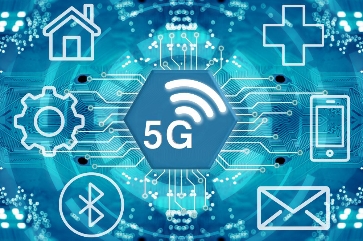
5G technology represents a significant advancement in mobile telecommunications, providing higher speeds, lower latency, and greater connectivity compared to previous generations (like 4G). Here’s an overview of how building towers and networks for 5G works and its essential components:
1. Understanding 5G Technology – Frequencies: 5G utilizes a broader spectrum of frequencies, including low-band, mid-band, and high-band (millimeter wave). Each band has different characteristics concerning range and speed.








– **Speed and Latency**: 5G can provide download speeds exceeding 10 Gbps and latency as low as 1 ms, making it suitable for applications such as augmented reality (AR), virtual reality (VR), and massive IoT deployments.
### 2. **5G Network Architecture**
– **Small Cells**: Due to the high-frequency nature of many 5G deployments, small cells (low-power base stations) are often required to provide coverage in urban areas, covering shorter distances (typically a few hundred meters).
– **Macro Cells**: These are traditional cell towers that cover larger areas and can serve as the backbone of a 5G network, especially for lower-band frequencies.
– **Distributed Antenna Systems (DAS)**: Used in dense urban environments and large buildings, DAS can enhance coverage by distributing the radio signal throughout a location.
### 3. **Components of a 5G Network**
– **Radio Access Network (RAN)**: This includes the antennas and radio equipment that connect user devices to the mobile network. RAN can be centralized or decentralized based on deployment strategy.
– **Core Network**: The core handles tasks such as authentication, data routing, and connectivity management.
– **Transport Network**: Provides connectivity between the RAN and the core. Fiber optics is often used due to its high capacity.
### 4. **Site Acquisition and Infrastructure**
– **Regulatory Compliance**: Building new towers or small cells often requires navigating local zoning laws and obtaining permits.
– **Site Location**: The placement of towers is strategic to ensure optimal coverage and capacity, focusing on high-traffic areas.
– **Power Supply**: Reliable power sources are crucial for the operation of cellular towers.
### 5. **Challenges in Building 5G Networks**
– **Infrastructure Costs**: The deployment of a 5G network is expensive, particularly in areas requiring new towers and extensive fiber networks.
– **Regulatory Hurdles**: Various local, state, and federal regulations can complicate deployment.
– **Public Concerns**: Issues such as health concerns and aesthetic objections can lead to pushback from communities regarding new towers.
### 6. **Future Trends**
– **Integration with Other Technologies**: 5G is expected to integrate with technologies like AI, edge computing, and advanced IoT applications to provide enhanced services.
– **Urban and Smart City Developments**: 5G will play a crucial role in developing smart cities, enhancing connectivity for traffic systems, public safety, infrastructure monitoring, and more.
### Conclusion
Building a 5G network involves a complex interplay of technology, infrastructure, and regulatory considerations. As the rollout continues globally, advancements in network design and management practices will likely improve efficiency and coverage, paving the way for innovative applications and services.


Leave a Reply